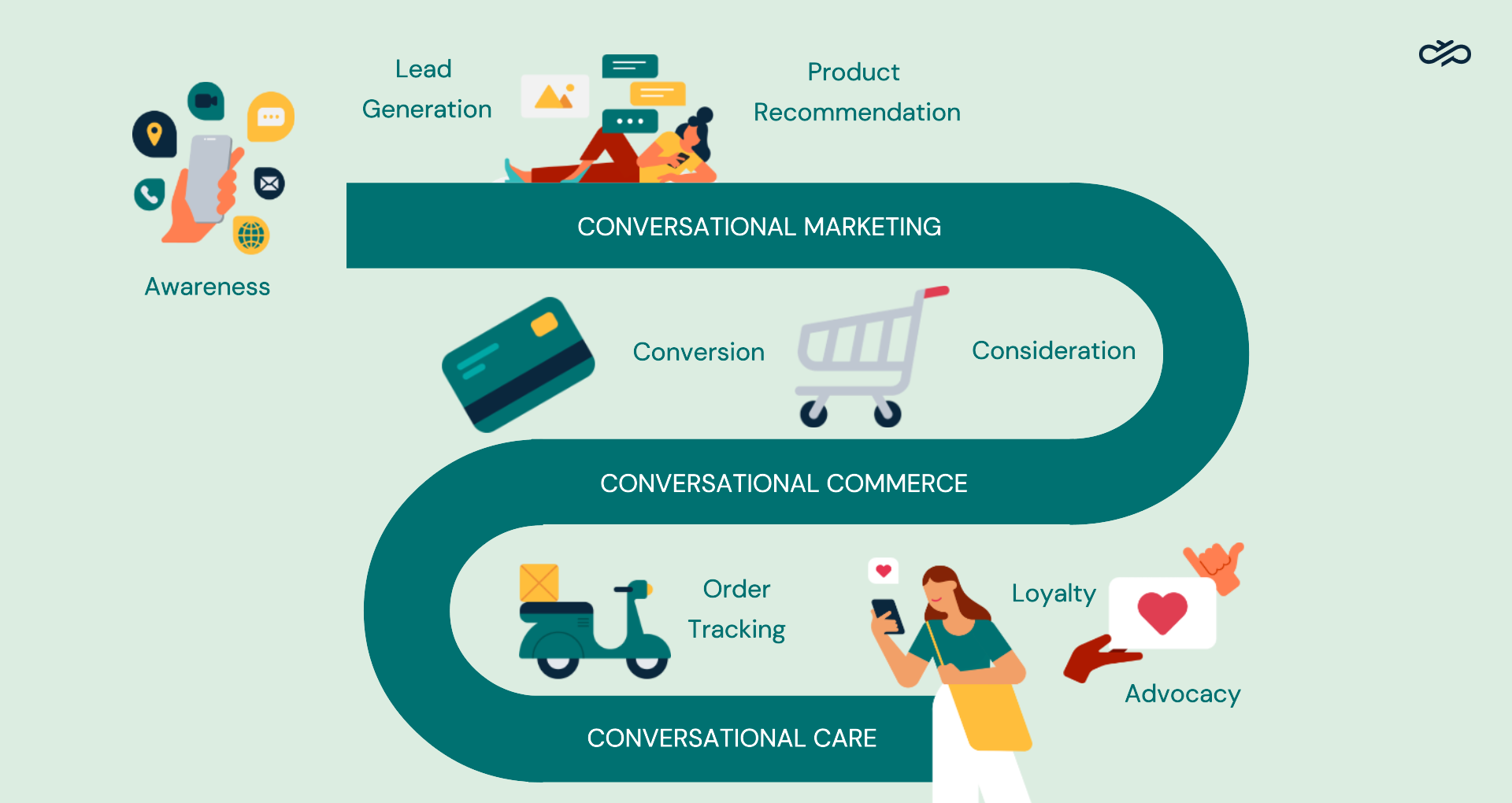In recent years, “conversational” has become a trendy word in the messaging world: conversational messaging, conversational commerce and AI, and, even conversational marketing. At Sinch’s Conversational AI Fest, Matt Ramerman, President of Sinch for Marketing, talked about what it means to be truly conversational and what companies can gain by following a conversational marketing strategy.
Why do companies still struggle to have meaningful interactions with their customers? Why do customers think that companies don’t respond to them? And what is the role of conversational chatbots?
That's exactly what we asked Matt Ramerman. In this interview, we talk about the new era of conversational, why marketers and customers have a communication gap, and how a conversational marketing strategy can help businesses increase their conversions.
How can direct marketing be improved?
Sinch Engage: Matt, you’re a veteran when it comes to marketing strategies. One of the most popular approaches is direct marketing. Is this still effective?
Matt Ramerman: In my opinion, direct marketing hasn’t changed much since David Ogilvy coined the term in the 1960s. Overall, marketers are still categorizing their audience based on a series of criteria, targeting these groups, and sending them direct campaigns.
This is till effective. However, this concept of marketing, didn’t anticipate that one day customers would be able to immediately respond to push messages. Typically, with a push message, as a marketer, you expect the customer to follow a call to action, or to convert. From experience, we know that only about four percent of users convert. And considering all factors, this is a fair return on investment for the overall effort.
At the same time, many marketers don’t realize that many of these “non-responders” do answer. When they receive a push message to their phones, a vast majority of users texts the company back. The problem is that that’s the type of response marketers are not set up for, and prospects feel ignored.
In order to close this conversational gap, companies need to have a conversational strategy and the right tools in place before sending out their campaigns.
The new era of conversational
If current marketing attempts result in a conversation gap, what does this mean for the future of direct marketing?
I believe that we need to enter the conversational era in terms of marketing. What we're suggesting is not only that companies have the technological means to answer customers, but also that they invite customers to respond. Companies need a conversational marketing strategy!
And businesses have to be ready for the response that’s going to come. That’s where artificial intelligence (AI) comes in. By leveraging AI that is oriented towards natural language, we can answer questions in the moment. Not only that, we can combine conversational messaging and AI to guide our clients smoothly through their customer journey.

Conversational means to be able to interact one-on-one with your client through their entire customer journey.
See how you can turn chats into sales!
How can conversational technology help clients through their customer journey?
As a matter of fact, conversational marketing can touch every point in the customer journey, from lead generation to retention. The technology can also power conversational commerce. AI technology can also be used to be available to customers 24/7.
Why companies need a conversational marketing strategy
What do companies have to gain by adopting a conversational marketing strategy?
When you are engaging customers in one-on-one conversations and catering to their needs right away, customers will respond positively. The immediate improvement is an increase in your conversion rate. Some companies already use conversational channels like WhatsApp as a very successful sales tool!

Main factors for effective conversational marketing
Besides availability, what are other elements of effective conversational marketing?
In order to work, conversational marketing should follow these four principles:
- Connect with clients in their favorite channels.
- Use rich media.
- Personalize your messages.
- Create meaningful conversations.
First, a business truly connects with its clients when it understands the online channels they use the most. When you meet your customers in their preferred channels, you will maximize your chances of conversion. The channels, of course, will vary by market. The US market, for instance, is centered around SMS and MMS, whereas in Latin America and Europe, there is a preference for internet-based messaging apps like WhatsApp.
Second, messages exchanged with customers also have to contain rich media. According to research from Forrester, one minute of video is worth 1.8 million words. So, companies should use as many images and videos as they can to make their messages more compelling. When you create more engaging content, there is also a higher chance to sell.

Third, companies need to personalize their content, especially on messaging channels. When you talk to your customers on messaging channels, you are in the same environment as their family and friends. In this more intimate atmosphere, it’s therefore important to personalize your messages as well.

A more personal approach also results in more meaningful conversations. A customer will be more inclined to buy from a brand when they feel that they received an exclusive offer, specifically tailored to their needs.
With personalized messaging campaigns, you can turn an audience of a million into a million audiences of one.
Matt Ramerman, President Marketing at Sinch
Conversational approach and AI chatbots
You have mentioned AI a few times as part of a conversational marketing strategy. How can conversational AI chatbots help companies?
Conversational AI bots can be of great assistance to generate these purposeful talks between companies and customers. Our AI chatbots here at Sinch are very sophisticated at understanding customer intent, for instance.
Even when customers use slang or when their message has a typo, the chatbots can identify the core intent of the message and answer accurately. This means that conversational chatbots can easily understand a customer’s message and respond in an engaging way. AI chatbots can also be implemented on virtually any channel, so even with a bot, it’s possible to continue the conversations in the user’s preferred messaging channel.
We believe that when companies are able to offer a seamless conversation along the entire customer journey on one single channel, there’s a higher chance for conversion. Thanks to the ongoing improvements in AI, chatbots are no longer limited to customer care. Rather, they can play a fundamental role in shaping meaningful conversational experiences.
Get in touch, and find out what conversational marketing strategy works best for your business!






